The conformal array antenna is an antenna array that keeps the shape of the object consistent. The antenna array and the carrier shape are "conformal", which enhances the adaptability and has great advantages over the planar array antenna. In modern wireless communication systems, conformal array antennas have become one of the best in the field of antennas because they can conform to the surface of carrier platforms that operate at high speeds such as aircraft, missiles, and satellites without destroying the carrier’s shape, structure and aerodynamics. Research hotspots is an important direction for the development of phased array radar in the new century. Among them, the flexible conformal array antenna (introduced later) is a more advanced conformal array antenna technology, which can not only conform to any curved surface, but also dynamically adjust and adapt to changes in shape, but also for aircraft due to aerodynamics, cold and heat, etc. The vibration and shape changes caused by it have better adaptability. Currently, China, the United States, and Japan are all conducting relevant research. China has successfully developed phased array radars and helicopter conformal antennas using cylindrical arrays.
Conformal array antenna technology development history
The research on conformal arrays actually started very early. When radars first appeared in the 1930s, scientists began to study special-shaped antennas such as circular ring arrays and conical arrays. They were regarded as the basis and basis of conformal arrays. Breakthrough. After the 1980s, with the outbreak of the information revolution, the rapid development of microelectronics technology and the emergence of a series of new devices and processes laid a solid foundation for the application of the conformal array. At present, the conformal array has begun to be partially practical. Shaped phased array antennas have been used in various radars, such as ground, shipborne, and airborne detection radars, electronic warfare systems, communication systems, etc., and the application fields are becoming more and more extensive.
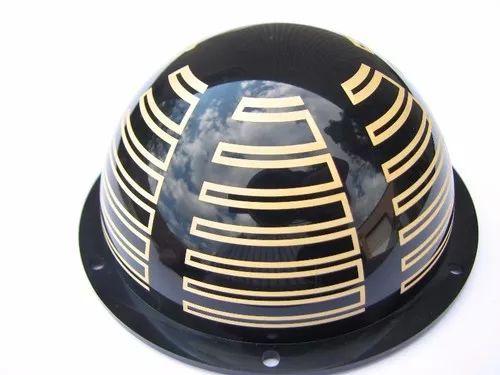
Conformal antennas have become practical
Technical characteristics of conformal array antenna
Traditional phased array radar antennas generally use linear arrays or planar arrays. Its advantages are that the structure is relatively simple, the technical processing is relatively easy, and the theory in various aspects is relatively mature, so the cost and cost are relatively low. It is currently widely used in phased array radars. The antenna form. However, the planar phased array antenna also has some inherent shortcomings, which limit its further development.
Determine the two parameters of the radar detection range: aperture and power. If you want to increase the detection range of the radar, you must increase the aperture of the radar. However, the space on the aircraft is limited, and it is difficult to find a larger space for the planar array. Thus, the conformal array appears. The biggest feature of the conformal array is that it can be shared with the carrier surface. In this way, the aperture of the radar antenna can be effectively expanded, and the detection range of the radar can be increased accordingly. In addition, it can also detect areas that were previously undetectable, such as the rear of combat aircraft, and expand the detection range. Another advantage of the conformal array is that it can extend the scanning limit of the plane phased array plus or minus 60 long to the hemisphere or even the 3/4 sphere area, and ensure that the performance of the antenna and radar will not be greatly reduced during the scanning process. . In addition, since there is no need to install radar in the body of combat aircraft, the space in the aircraft can be used to install other equipment and fuel, thereby increasing the load of the aircraft and making full use of the limited space in the aircraft. In addition, the conformal antenna also helps Improve the structural strength of the equipment, reduce the volume and weight.
Compared with planar array antennas, the analysis and synthesis of conformal array antennas are more complicated. Generally, the synthesis of the conformal array antenna is not only the synthesis of its pattern, but also the shape of the conformal array antenna, the form of the array unit, and its distribution must be considered in the initial stage of the design. In addition, the influence of the conformal carrier and the mutual coupling effect between the elements on the resonant frequency, bandwidth and polarization of the array and the array elements should be considered in the design. Therefore, the design of conformal array antennas is a complex system problem. It is difficult to have a rigorous and accurate solution to this problem, and numerical analysis methods are usually used for research. At present, the commonly used numerical analysis methods mainly include the method of moments (MOM) based on integral equations and its fast algorithms, and the finite difference time domain method (FDTD) and finite element method (FEM) based on differential equations. However, the analysis of the method of moment of the conformal array antenna usually adopts the Green's function in the coordinate system conformal to the carrier platform. This method is indeed very useful, but it is very difficult to analyze the complex platform.
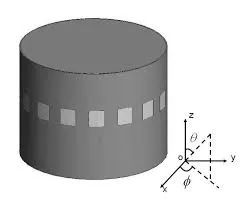
Cylindrical array is the basis of conformal array
Research on Conformal Antenna in my country
China started the research on the conformal array in the 7th and 80th of the last century. In the 1990s, the research on the antenna elements of the conformal array was started, and the prototype was completed. In the new century, the development of the conformal phased array antenna was started. In 2012, Zhuhai The CS/RB1 radar was publicly displayed for the first time at the air show. From the relevant pictures, it uses a cylindrical conformal phased array design, has a 360-degree detection capability, and works in the L-band, which is suitable for low air defense, rapid delivery and anti-firepower In combat, it can be used to detect enemy mortar shells and locate their launch positions, as a warning and tracking radar for interception and counterattack fire weapon systems, and can also be used to correct the firing of one's own mortar; it can be carried manually and can be adapted to various transport aircraft, The requirements of helicopter airdrop are strong maneuverability, easy operation and deployment, and suitable for rapid delivery; it is responsible for the detection tasks of various low-altitude targets in the air defense system. The appearance of CS/RB1 radar marks that my country's conformal phased array radar technology has moved from the laboratory to the military and the international market.
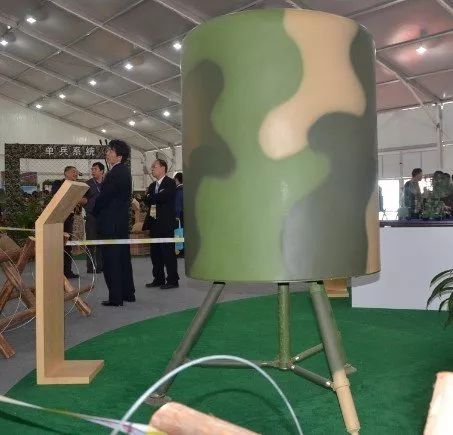
CS/RB1 Cylindrical Array Phased Array Radar developed in my country
Successfully developed the first domestic helicopter conformal antenna
Recently, the first helicopter conformal antenna independently developed by the Aviation Industry Corporation of China passed the electrical performance test. The results showed that the electrical performance test results of the conformal antenna were in line with expectations, marking the successful development of the first domestic helicopter common antenna. Realize installed application in the model.

China's top radar expert Ben De Academician Zuike Satellite TV revealed that 14 institutes are developing a sci-fi technology-airborne conformal array radar, which is commonly called "smart skin".
Research on Conformal Antenna in European and American Countries
Developed countries such as Europe and the United States have long recognized the advantages of conformal array antennas, but the existing conformal array antenna applications are only to design the conformal array into a predetermined shape, such as cylindrical or hemispherical, and passively adapt The shape of the carrier is mostly used in ground and shipborne radar antennas. On the aircraft, due to the complex use environment, the application of the conformal array faces more technical problems.
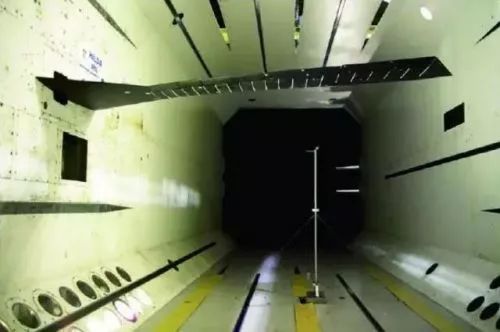
The U.S. Air Force conducts wind tests on the wings of the "Sensor Aircraft"
In 1960, the US Naval Aviation Command began to study conformal phased array antennas for aircraft and missile skins. In 1973, the United States developed spherical phased array antennas and circular phased array antennas.
U.S. Navy cylindrical conformal array can achieve 360° detection
According to relevant information: the carrier communication terminal used by the U.S. Navy’s Cooperative Engagement System uses a cylindrical conformal phased array antenna, which is composed of 96 column feeds, and each column feed has 10 array elements distributed by microstrip antennas. Associated, the former Soviet Union has successfully developed an air traffic control radar with cylindrical conformal phased array antennas. Its maximum detection range can reach 400 kilometers, can achieve 360-degree detection, and can master up to 100 batches of targets. The United States has also completed the adoption. Development of an optically controlled wide conformal phased array antenna.
In 2004, the U.S. Air Force and Raytheon started research on X-band thin phased array radar, and it uses conformal antennas. European EADS is also developing a two-dimensional curved electronic scanning antenna for UAVs for testing. . This kind of antenna array does not require mechanical devices, and the curved antenna array is placed on the surface of the fuselage, but becomes a part of the fuselage structure. It must not only send and receive electromagnetic waves, but also be able to withstand the impact of wind, rain and foreign objects. Reduce the volume and weight, improve the reliability of the system.
The U.S. Air Force has also supported multiple conformal array antenna projects. For example, in the “Structural Integrated X-Band Array†(SIXA) project, a 64-unit conformal array antenna was installed on the wing of the Boeing 707 aircraft. Approximately 6m; in the “S-CLAS†project, an active phased array was installed on the leading edge of the aircraft’s wing to test the conformal array radar system. The processing method can overcome the influence of the deformation of the fuselage and the shaking of the wings.
The above-mentioned two projects only study the influence of wing bending on the performance of the array and the bending compensation technology, and the closest model application is the 3~6m super model specially manufactured for this aircraft in the US Air Force "SensorCraft" project. A high-frequency conformal active phased array radar antenna was integrated into the wing for wind tunnel tests; in addition, a 0.37m2 X-band conformal active phased array radar antenna has been made.
Research on Conformal Antenna in Japan
Japan has always been a world leader in information technology and microelectronics technology. The accumulation of these technologies has provided a solid foundation for the study of conformal array antenna technology. The Electronic Equipment Research Institute of Japan’s former Defense Technology Research Headquarters (now integrated into the Department of Equipment of the Ministry of Defense) announced in 2013 the flexible conformal array antenna that it is leading research and development, which has made a great breakthrough in practicality and solved Most of the problems faced by conformal array antennas.
The development goal of this Japanese project is to face the future aviation equipment, which is used to replace the in-flight radar antenna. The flexible conformal array antenna technology realized by it mainly realizes three points: the antenna can be bent at any angle; the antenna sensor can detect the curvature according to the bending state, Automatically correct the electromagnetic wave phase; by comparing the gain effect of the antenna in the bent state and the planar state, the technical feasibility of automatically correcting the electromagnetic wave is verified.

Flexible antenna can be bent at any angle
The antenna developed in Japan is equipped with a sensor that can detect the curvature of the antenna, obtain the coordinates of each element by calculating the radius of curvature, and then automatically adjust the phase of each element to form an electromagnetic beam in a specified direction. The Defense Technology Division verified the gain effect of the curved flexible conformal array antenna in a microwave anechoic chamber, confirmed that an electromagnetic beam was formed in the specified direction, and proved that the flexible conformal array antenna is effective in correcting electromagnetic waves.
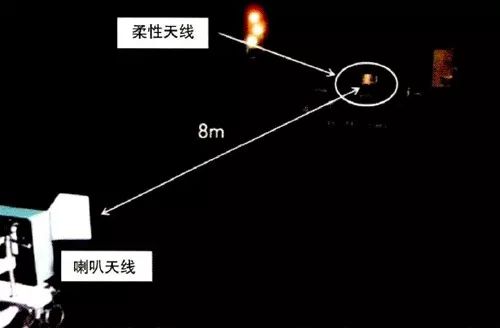
The trial-produced flexible conformal array antenna was tested in an anechoic chamber to verify the technical feasibility of automatically correcting electromagnetic waves
The goal of Japan’s flexible conformal array antenna technology research is that if a large-diameter antenna is required in the current aircraft design, the diameter of the nose must be larger, and the flexible antenna technology can install the antenna on the outside of the aircraft. The shape of the body surface matches, replacing the radar antenna inside the aircraft, avoiding problems such as internal thermal management and electromagnetic compatibility. The flexible conformal array antenna can adapt to any curved shape, and its flexible conformal array antenna is light and thin in structure, small in weight, and has good mounting adaptability. Compared with the conformal antenna with a fixed shape, the flexible conformal antenna eliminates the need for the antenna to be specially designed to adapt to the shape of the aircraft, and can adapt to the changes in the aerodynamic, thermal expansion and contraction of the aircraft.
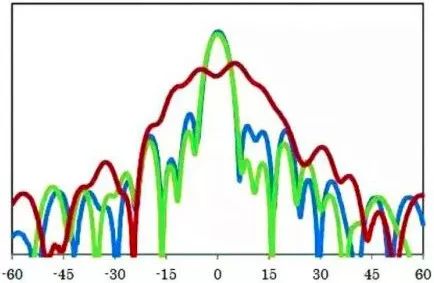
Flexible antenna test results (Note: blue is the plane state, red is no electromagnetic wave correction, green is electromagnetic wave correction)
New Trend of Flexible Conformal Array Antenna Technology
If the flexible conformal array antenna technology is mature and has a wide range of military applications, it will also change the traditional aircraft design concept. It will be of great benefit to improving the detection capability of combat systems, especially in today's rapid development of stealth aviation equipment, which is more realistic. .
First, the flexible conformal array antenna can be installed on the surface of aviation equipment with different curvatures, and the aviation equipment can be designed with the optimal aerodynamic shape without the need to pay additional aerodynamic costs for installing the antenna array. It is suitable for aircrafts with large aspect ratio wings with relatively large wing deformation. Large early warning aircraft can make full use of the surface area of ​​the fuselage and large wingspan to arrange antennas, which greatly improves the detection capability without the need to carry additional "disks" or " External antennas such as "balance beams"; or high-altitude long-endurance unmanned reconnaissance aircraft, using flexible conformal array antennas can achieve large-aperture radar detection and meet their wide-area reconnaissance capabilities.
Second, the flexible conformal array antenna can not occupy the space inside the aircraft, and the vacated space can be used to install other equipment and fuel, thereby increasing the load of the aircraft, making full use of the limited space in the aircraft, and also helping to improve The structural strength of the equipment, the reduction of volume and weight, help to improve the mobility of the carrier and the survivability of the battlefield. This has huge advantages for space-compact aviation equipment such as fighters or missiles. If fighters can integrate conformal array antennas on the surface of the fuselage to replace the plane array radar antennas in the aircraft, the nose space can be reserved for other more important aircraft. The equipment can carry more fuel to increase the range and carry more airborne weapons. For radar-guided missiles, if a conformal array antenna is installed on the surface, the size and weight of the seeker can be reduced. The space saved in the missile body can be installed with a larger warhead or carry more fuel, and the size of the missile body can be greatly reduced. Increase portability and improve mobility.
Third, the flexible conformal array antenna expands the range of platforms that can be used for situation detection. Any aircraft can be easily modified for intelligence collection. Wings, doors, or fuselage can be used as antennas. Any manned aircraft or drone can perform surveillance tasks without the need to develop special surveillance aircraft to adapt to radar antennas. .
Fourth, the conformal array antenna can not only be used for radar detection and communication, but also may provide a new method of electronic warfare operations, greatly improving the effectiveness of electronic attacks. The high-power aperture product of a large-scale conformal array can detect enemy communications, and can deal with many X-band radars and a large number of short-wave communications. Some experts once envisioned using a conformal array antenna to wrap an unmanned combat aircraft the size of a missile to quickly reach the enemy's target and generate a destructive peak power at close range, thereby electronically attacking enemy facilities.
Comprehensive summary
Although various countries have made great breakthroughs in the conformal array, some deep-seated problems have not been solved well, restricting the further development of the conformal array. For example, a major difficulty of the conformal array is to ensure that all elements of the array are the same. However, the antenna elements of the conformal array are not on the same plane, so the analysis and engineering realization of the conformal array are very difficult. When the conformal array scans, the on-off switching of the array element work and the amplitude and phase weighting changes are various, and the corresponding feed network power distribution and beam control need to be solved in real time. In addition, in the conformal array, different positions of the array elements have their own electrical environment Therefore, when the antenna is working, how to solve the active input impedance matching is a key problem that needs to be solved. For carriers such as aircraft and missiles, body vibration and dynamic deformation have a greater impact on the antenna array. To be resolved in.
China MTB-CUT 180T Screen Protector Machine,Hydrogel Protector Machine supplier & manufacturer, offer low price, high quality Cell Phone Screen Protector Machine,Mobile Phone Screen Protector Machine, etc.China Mtb-Cut 180T Screen Protector Machine,Hydrogel Protector Machine supplier & manufacturer, offer low price, high quality Cell Phone Screen Protector Machine,Mobile Phone Screen Protector Machine, etc.China Mtb-Cut 180T Screen Protector Machine,Hydrogel Protector Machine supplier & manufacturer, offer low price, high quality Cell Phone Screen Protector Machine,Mobile Phone Screen Protector Machine, etc.China Mtb-Cut 180T Screen Protector Machine,Hydrogel Protector Machine supplier & manufacturer, offer low price, high quality Cell Phone Screen Protector Machine,Mobile Phone Screen Protector Machine, etc.
180T Screen Protector Machine,Hydrogel Protector Machine,Cell Phone Screen Protector,TPU film cutter Machine
Mietubl Global Supply Chain (Guangzhou) Co., Ltd. , https://www.mietublmachine.com
